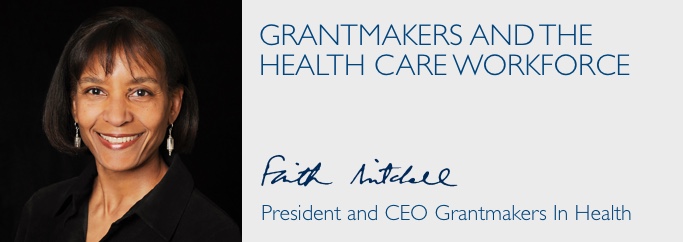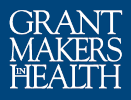
In my last several Bulletin letters, I’ve written about issues that are top of mind with current and past GIH board members. My series concludes with a look at the health care workforce, a pressing and complex issue that encompasses aspects of quality, equity, and delivery system reform.
In their responses to our survey about their priorities for the future, board members called attention to multiple dimensions of the workforce challenge that would benefit from philanthropic support.
Professional Education
There was skepticism that professional education is prepared to address a changing health care system and changing country, alongside optimism that funders could influence health professional education, especially by focusing on the intersection of health professions education with improvement of clinical care:
[This] would mean investing in facilitating team training in all health care delivery settings, linking it with faculty development, and, in turn, involving learners from health professions schools/college of multiple disciplines (medicine, nursing, pharmacy, allied health, social work, etc.) in teamwork and care improvement. The funding can be direct assistance in these activities; or, it can help support scholarship in various professions, including management, to make the processes of teamwork, teamwork training, and care improvement more effective and efficient.
The suggested approach aligns with evolving thinking not only about the contributions professional education can make to the improvement of clinical care, but also about team models that can potentially improve quality.
Behavioral Health Services
Another board recommendation was that:
Funders should support the training of behavioral health professionals.
Demand for behavioral health workers’ services was transformed by passage of the Mental Health Parity and Addiction Equity Act and the Affordable Care Act, which provide coverage for behavioral health services and substance use disorders. According to the Substance Abuse and Mental Health Services Administration (SAMHSA), 75 percent of U.S. counties have unmet behavioral health needs, which have been dramatically magnified by the opioid epidemic.
Services for an Aging Population
The training of geriatricians [should] be a priority.
A rapidly aging US population will increase the demand for appropriately trained health professionals. Importantly, policy changes that affect immigration may reduce the number of professionals available to meet these demands, because foreign-born professionals are currently estimated to constitute almost 17 percent of this country’s doctors, nurses, dentists, and other health care providers.
Conclusion
As a central component of health care infrastructure, the health care workforce is a vital and important focus of health grantmakers’ attention. In particular, funders can be advocates for the linkages that we know are fundamental to improved quality.
[Grantmakers can] effect improved care by creating, encouraging, and reinforcing the critical linkage between health professions (workforce) education and health care delivery systems and practices.

